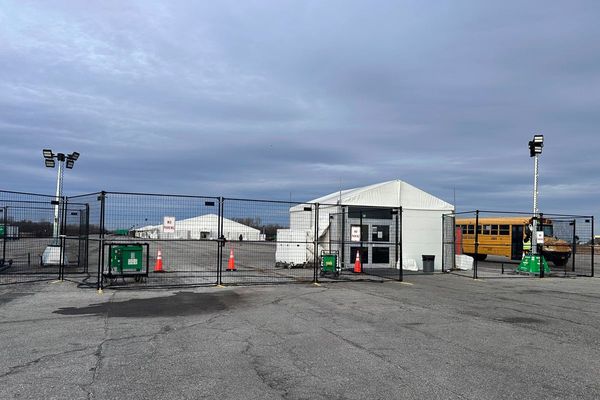
North India's annual tryst with smog
Air quality in Delhi and adjoining regions has slumped ahead of winter, and the bountiful rains in October has merely delayed the inevitable. AQI has turned either ‘poor’ or ‘severe’ in many parts of Delhi. The Commission for Air Quality Management has instructed industries and construction and demolition sites to follow its directives over the next few days. Also, all citizens must follow a Graded Response Action Plan (Grap).
The reasons for the collapse in air quality are well-known: stubble burning in India's food bowls Punjab and Haryana; vehicular and industrial emissions that get trapped in the winter fog; and the fireworks in the run-up to Diwali.
The Delhi government and the central agencies adopt short-term measures every year, from the odd-even scheme for automobiles to restricting construction activities and banning firecrackers. However, the malaise is deeper.
The central government also provides subsidized machinery to farmers to manage paddy straw. Meanwhile, the Delhi and Punjab governments plan to use bio-decomposers on 5,000 acres to prevent stubble burning.
India, home to the world's most polluted cities
The World Air Quality Report released by Swiss organization IQAir in March 2022 should set alarm bells ringing in India. The study found that 35 of the 50 cities in the world with the worst air quality are in India. Also, no Indian city met the World Health Organization’s air quality standards of 5 micrograms per cubic meter. For the fourth consecutive year, Delhi was the world’s most polluted capital.

Moreover, New Delhi and Kolkata figured in the list of 20 most polluted cities in the world on particulate matter (PM2.5) levels, according to a report by State of Global Air in August. PM 2.5 causes triggers respiratory ailments and affects visibility. State of Global Air is a collaboration between the US-based Health Effects Institute (HEI) and the Institute for Health Metrics and Evaluation’s Global Burden of Disease Project.
You might also like
High gas prices: How India's gas economy works
Invesco to sell 5.5% Zee stake for $169.5mn
Why DMart disappoints investors
Shree Cement's good show fails to impress street
High levels of air pollution -- and not just in the north Indian states -- are a byproduct of the country's rapid economic growth, with soaring energy needs of industrialization, an explosion in vehicular emissions, and spurt in population with expanding cities. It’s also a global phenomenon, and some of the fastest growing economies have also been the worst air polluters, including the US and China.
Now, India is an economy heavily driven by services, but aiming to give a big push to manufacturing which is only about 17% of its GDP now. Prime Minister Narendra Modi’s Make in India and the Production Linked Incentive schemes expect to catalyse a manufacturing boom across sectors from auto to white goods. In this context, the potential damage to environment from increasing industrialization, at a time the country already has some of the world's most polluted cities at a relatively initial stage of its manufacturing evolution, is imaginable.
Take the example of Vietnam, which has doubled the share of manufacturing as a share of GDP over the past two decades (India's manufacturing was just over 15% of GDP during this period). However, it it has paid a price for this rapid industralization. According to the World Bank, Vietnam has been the world's fastest-growing greenhouse emitter over the past two decades. In India, the problem can be exponentially greater, given its size and population. Remember, India, defying global trends, became a services-led economy without becoming a manufacturing tiger first.
How China did it
China too paid a steep price for its economic growth. Growing prosperity boosted air pollution that led to a public health crisis, killing millions every year. But the country has drastically improved the air quality of its cities. It prohibited new thermal power plants and shuttered old plants, curbed vehicular growth and introduced electric bus fleets, among many measures.
China unveiled its Air Pollution Action Plan in 2013, and by 2017, it had reduced PM2.5 levels by 33% in Beijing and 15% in the Pearl River Delta. In 2018, China introduced its Three-year Action Plan for Winning the Blue Sky War which sets even steeper targets for its cities.
Indeed, air pollution in China’s industrialized cities was almost the same as that in London at the height of the Industrial Revolution in 1890. “But China cleaned up its air twice as fast as the United Kingdom did after the Great Smog of postwar London killed 8 000 people, says earth.org in a report.
Where India stands
The Indian government too is taking measures to arrest air pollution. Old, polluting vehicles are being phased out, thermal power plants are being eased out and there is a growing emphasis on clean energy sources. The Narendra Modi government has committed India to a net zero carbon emissions target by 2070. By 2030, it says India will meet half its electricity needs from renewable energy. Already, the government is showing intent and India is among the fastest-growing renewable electricity markets in the world. India is among the top five countries in overall installed capacity in wind and solar.
About 40% of India’s aggregate installed power capacity comes from renewables, and the government hopes to almost treble it to 450 GW by 2030, with 60% of it coming from solar.
Elsewhere in Mint
In Opinion, Siddharth Pai explains how America’s vanishing demographic dividend will benefit Indians. How can India get more of its working-age people into employment? Amit Kapoor & Bibek Debroy answer. Tulsi Jayakumar writes on the misplaced paranoia over rupee volatility. Long Story narrates the many troubles with Kerala's plan for a shorter route to Bengaluru.







